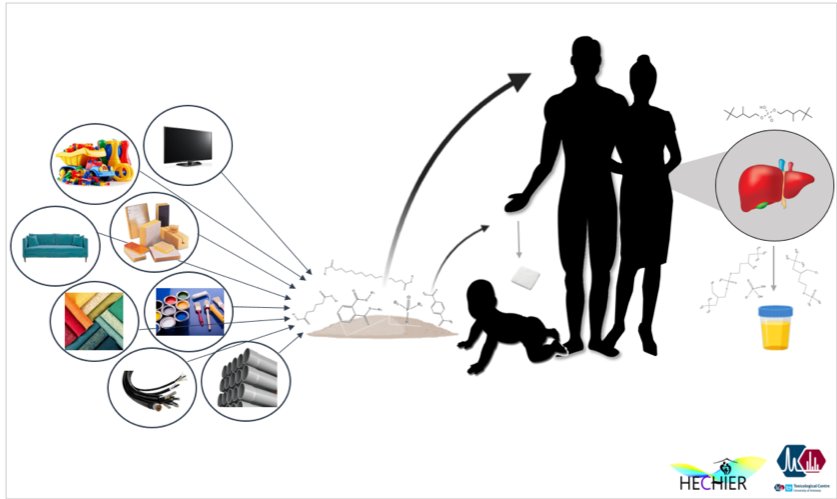
Hi, my name is Christina Christia. I studied chemistry at the Aristotle’s University of Thessaloniki (AUTh) in Greece, where I obtained my Master’s degree in Environmental Chemistry. I am currently a PhD student at the UAntwerp Toxicological Center, under supervision of Prof. Adrian Covaci, and funded by a 1-year FWO umbrella grant and a 3-year BOF DOCPRO3 fellowship. My project is called HECHIER and it is focused on the “Characterization of occurrence, metabolism and contribution to human exposure of new chemical compounds present in the indoor environment”.
What exactly am I studying? Let me explain:
In daily life, products such as furniture, electrical appliances, textiles, and insulating materials contain many chemical additives to comply with safety rules and to give special characteristics to materials. These additives are released from these products into the indoor environment and they are usually accumulated into dust. People are exposed to this dust and consequently to numerous chemical additives. In fact, recent evidence from biomonitoring studies in human biological samples indicates significant exposure to more than a hundred of these chemicals.
This exposure has been linked to an increase in health problems and strong indications have led to the restriction or banning of many of these legacy additives. However, alternative chemicals have replaced the restricted and banned ones. We presently have scarce information on their presence in the indoor environment and human exposure to them. Thus, a pressing question that needs to be answered is:
What are the new chemicals that are present indoors and to what extent are people exposed to them?
To start answering this question, we designed a study that included 25 families in Flanders, Belgium. Paired samples of floor dust, urine and hand wipes were collected from these families. The first thing we’ll do is develop analytical methods and workflows to identify and quantify new chemicals in the matrices of dust and hand wipes. This should give us an overview of the new chemicals that are present in dust and the potential human exposure via inadvertent dust ingestion and dermal absorption can also be assessed. Next, we’ll use human liver cell extracts to generate the metabolites of selected chemicals. The screening of these metabolites in urine samples will also give us important insights into the actual human exposure to new chemical additives that originate from the indoor environment.

Article written by Christina Christia. Edited by Dr. Bronwen Martin
